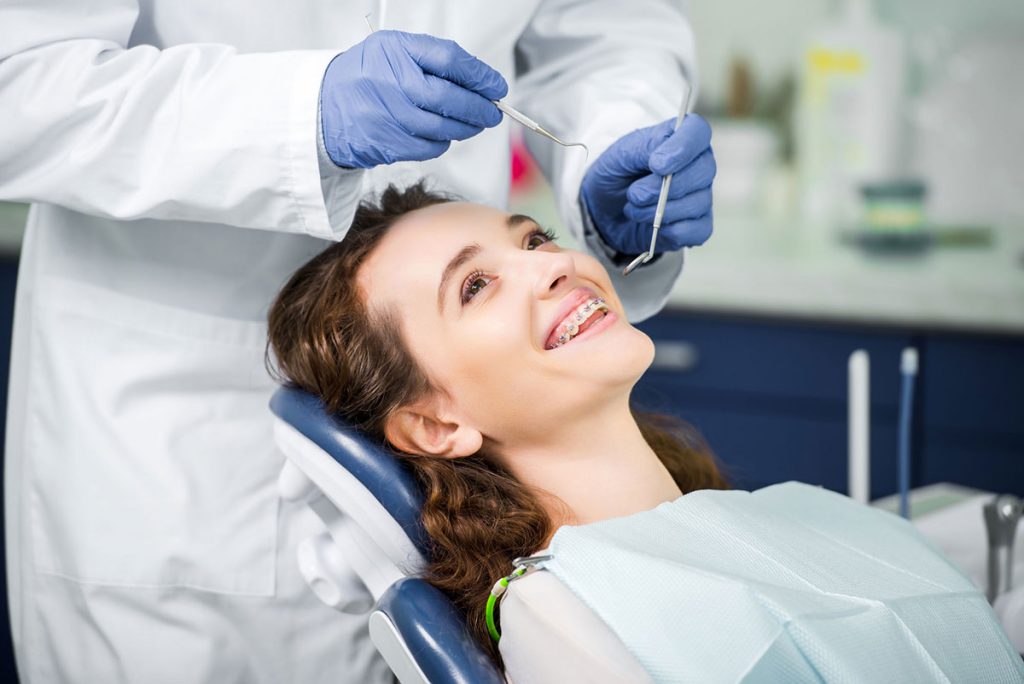Ancient Greece and Rome
The history of orthodontics starts back in ancient Greece and Rome. Aristotle and Hippocrates had knocked around ideas for straightening teeth even as far back as 400 and 300 BC and archaeologists have proof that the Etruscans used appliances to maintain spaces and prevent collapses of teeth because they buried their dead wearing them. Also in a Roman tomb a dental device was found along with documentation on how to use it.
18th Century France
Pierre Fauchard, a French dentist in the 18th century who is considered the father of modern dentistry, wrote a book in 1728 about methods for straightening teeth. He also was known to use a device called “bandeau” to widen the upper palate. A few years later in 1754 another dentist Louis Bourdet, dentist to the King of France, published his own book where he suggested improvements to the bandeau. He is also considered the first dentist to pull bicuspids to reduce tooth crowding.
An English anatomist and surgeon, John Hunter held a deep interest in the anatomy of teeth and maxilla. His book, The Natural History of the Human Teeth is universally considered the first text to classify teeth and to explain the growth of the jaw bones.
19th Century
It wasn’t until the 19th century though that Orthodontics as a separate dental specialty was defined. A student of Hunter, Joseph Fox made notable contributions to the emerging science of orthodontics. Fox focused on removal of teeth and timing treatments using bite blocks to coincide with natural growth patterns.
The term orthodontia was first used in 1841 by Joachim Lafoulon. In 1819 the first wire crib was used and this is the time that materials like precious metals, steel, gum rubber and vulcanite were used to create loops, hooks, spurs and ligatures to straighten teeth.
In addition, the first gum elastics were used by Edward Maynard in 1843 and E.J. Tucker first used rubber bands for braces in 1850.
In 1836, the first plaster model record of malocclusion was recorded by Friedrich Christoph Kneisel, dentist to Prince Charles of Prussia. He went on to be the first to use a removable dental device on patients.
The first publication donated solely to orthodontis was published 1841 by J.M. Alexis Schange. He introduced modifications to previous screw adjustments an anchorage techniques.
19th Century American Dentisry
In 1834, the first American dental association emerged as part of the Society of Surgeon Dentists of the City and State of New York. American dentists pioneered the use of vulcanite as well the first electric drill. American dental surgeons were also the first to discover anesthesia.
The American Journal of Dental Science was first published in 1839, and edited by Chapin A. Harris until 1858, until he founded the first school of dentistry at the University of Maryland. Harris published the first modern text on dentistry, The Dental Art in 1840. Gold caps on molars as well as brackets were some of Harris’ most noted contributions.
By the middle of the 19th Century, research emerged on the causes for tooth protrusion and causes of malocclusion. An understanding of the effects of pressure habits, particularly from the tongue match many of the modern knowledge. Further, advanced in the influences of congenital and hereditary effects on teeth development, as well as dietary deficits and diseases.
Not all beliefs would stand the test of time and understanding. Misguided theories included malocclusion resulting from interracial genetics, and one that a child inherited the maxilla from one parent while the mandible was inherited from the other parent.
20th Century
Edward Angle founded in the American Society of Orthodontia in 1901, which was renamed the American Association of Orthodontists in the 1930s. Angle also developed the first classification system for malocclusions.
In the early years of the 20th Century, braces were made of materials such as gold, silver, even platinum. It was not until the 1950s that the use of stainless steel emerged, reducing the cost of braces.
Before the 1970s, braces were wrapped around the teeth, but by the mid-70s, orthodontist began directly adhering the brackets to the teeth, and lingual braces where the braces are adhered to the back of the teeth were started to be used a lot.
Late 20th Century and Early 21st Century
Thanks to technology discovered by NASA in the 1960s, nickel-titanium metal became available towards the end of the 20th Century. This material offered a lighter weight and less visible wire, leading to less discomfort. Advances in technology lead to a drastic decrease in treatment times. Braces used to be a 4-6 years commitment, while modern technology provides results in two years or less.
In 1997, Invisalign, invented by Zia Chishti, emerged. Finally, there was an option for treatment with little visual evidence. A series of clear aligners are worn over the teeth that are removable for eating and cleaning.
Invisalign offers solutions to some of the most common complications associated with braces, such as tooth decay from improper brushing and cleaning, especially around brackets adhered to the teeth. Teens and adults too self-conscious for traditional braces now have a more comfortable and less visible option.
Orthodontics Today
With all the advances in technology today, the field of orthodontics has grown in leaps and bounds in the last twenty years. We know have digital x-rays and 3D dental imaging which are better quality and allow orthodontists to get a more detailed look at the structure of the mouth. And because they are digital, orthodontists can gain immediate access to the images.
There is also the i-Cat Cone Beam 3D Dental Imaging System which can provide a full set of x-rays in one 360 degree scan and create 3D images of the teeth. Another plus is that there is less radiation with this type of x-rays.
Creating the braces has also gotten a lot of easier. The iTero scanner for Digital Impressions allows orthodontists to create the teeth impressions digitally instead of manually. They simply scan the patient’s mouth and then they can view the impressions on the computer just a few minutes later. In addition digital impressions are more accurate reducing the number of fit issues with the braces.
In addition CAD/CAM and robotic wire bending technology used in combination with digital scanner allows the orthodontist to more précising position the brackets and wires, especially with lingual braces where are adhered to the backs of the teeth.
Even with the types of braces there are so many more options today. Metal braces adhered to the front of the teeth is still the most common treatment, but for people who are concerned about the braces being noticeable, there are other options like lingual braces, ceramic braces and Invisalign aligners.
Here is what is available today….
Metal braces
- These are permanently adhered to your teeth and can only be taken off by the orthodontist at the end of treatment
- The orthodontist tightens the wires during treatment to help shift the teeth
- There are certain food and drink restrictions with this treatment
- May have to wear them for 3 or more years depending on how your treatment goes
- Most bite and alignment issues can be treated by metal braces
Invisalign
- They are clear plastic aligners that can be easily removed
- Can be removed to eat and to brush and floss your teeth
- Treatment includes a new set of aligners every two weeks as your teeth shift into proper alignment
- Invisalign can also handle both simple and complicated alignment issues
Ceramic Braces
- These braces are made of ceramic which blends into your teeth better and are invisible.
- In all other ways though these braces are like the metal ones. You still have food and drink restrictions and will need the wires tightened as the teeth shift.
- Most bite and alignment issues can be treated by ceramic braces.
Lingual Braces
- Lingual braces are attached to the back of the teeth to make them more invisible.
- They can be a little harder to adjust to and can cause speech difficulties at first.
- You need to be extra diligent with oral hygiene because it can be harder to clean the backs of the teeth where the brackets are.
Six Month Smiles
- With Six Month Smiles, clear braces are put on only a few teeth so treatment takes less time.
- This treatment though focuses more on appearances than function and structure. If you have serious bite and alignment issues this method won’t correct it.



